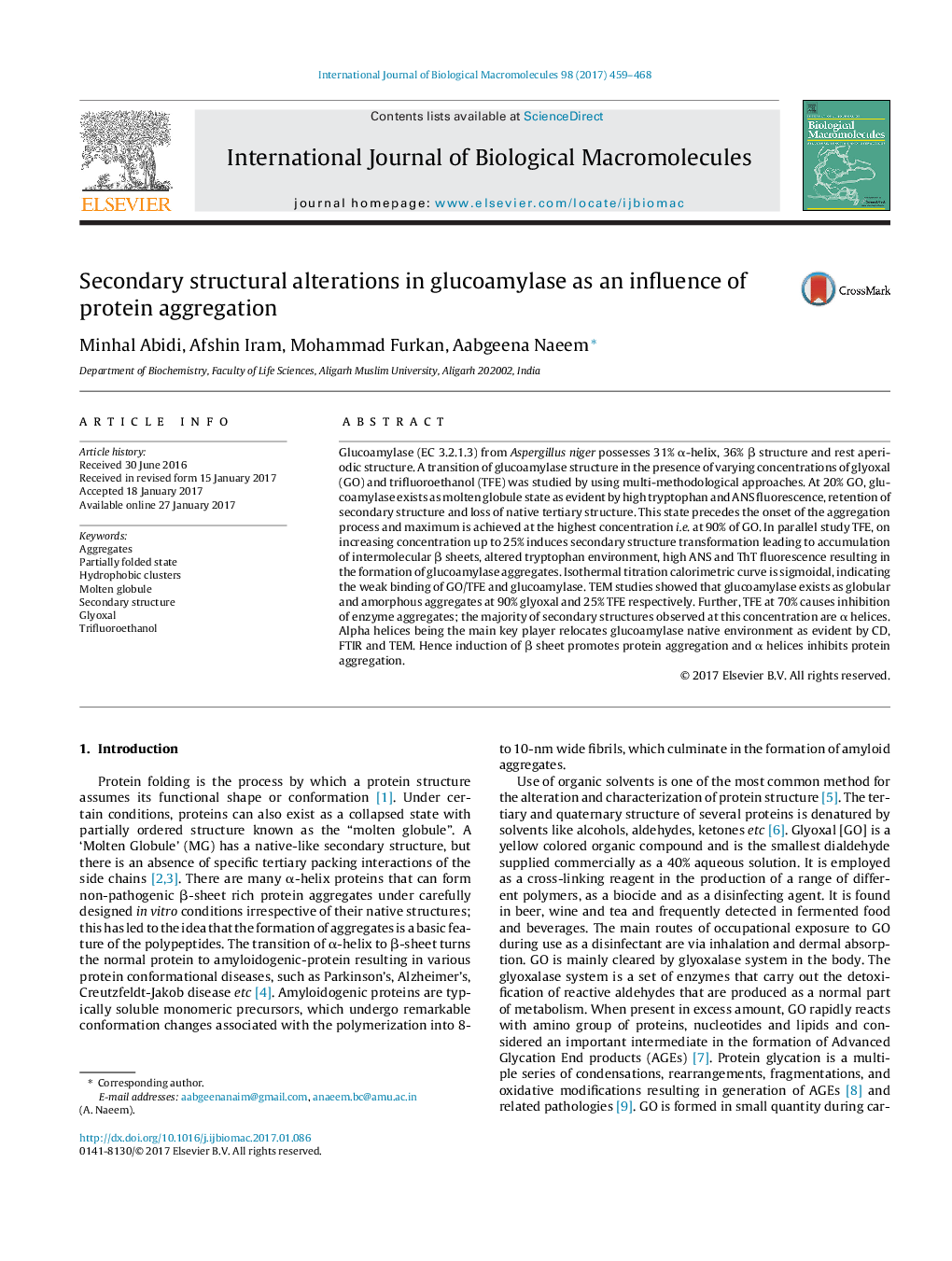| Article ID | Journal | Published Year | Pages | File Type |
|---|---|---|---|---|
| 5512294 | International Journal of Biological Macromolecules | 2017 | 10 Pages |
Glucoamylase (EC 3.2.1.3) from Aspergillus niger possesses 31% α-helix, 36% β structure and rest aperiodic structure. A transition of glucoamylase structure in the presence of varying concentrations of glyoxal (GO) and trifluoroethanol (TFE) was studied by using multi-methodological approaches. At 20% GO, glucoamylase exists as molten globule state as evident by high tryptophan and ANS fluorescence, retention of secondary structure and loss of native tertiary structure. This state precedes the onset of the aggregation process and maximum is achieved at the highest concentration i.e. at 90% of GO. In parallel study TFE, on increasing concentration up to 25% induces secondary structure transformation leading to accumulation of intermolecular β sheets, altered tryptophan environment, high ANS and ThT fluorescence resulting in the formation of glucoamylase aggregates. Isothermal titration calorimetric curve is sigmoidal, indicating the weak binding of GO/TFE and glucoamylase. TEM studies showed that glucoamylase exists as globular and amorphous aggregates at 90% glyoxal and 25% TFE respectively. Further, TFE at 70% causes inhibition of enzyme aggregates; the majority of secondary structures observed at this concentration are α helices. Alpha helices being the main key player relocates glucoamylase native environment as evident by CD, FTIR and TEM. Hence induction of β sheet promotes protein aggregation and α helices inhibits protein aggregation.
